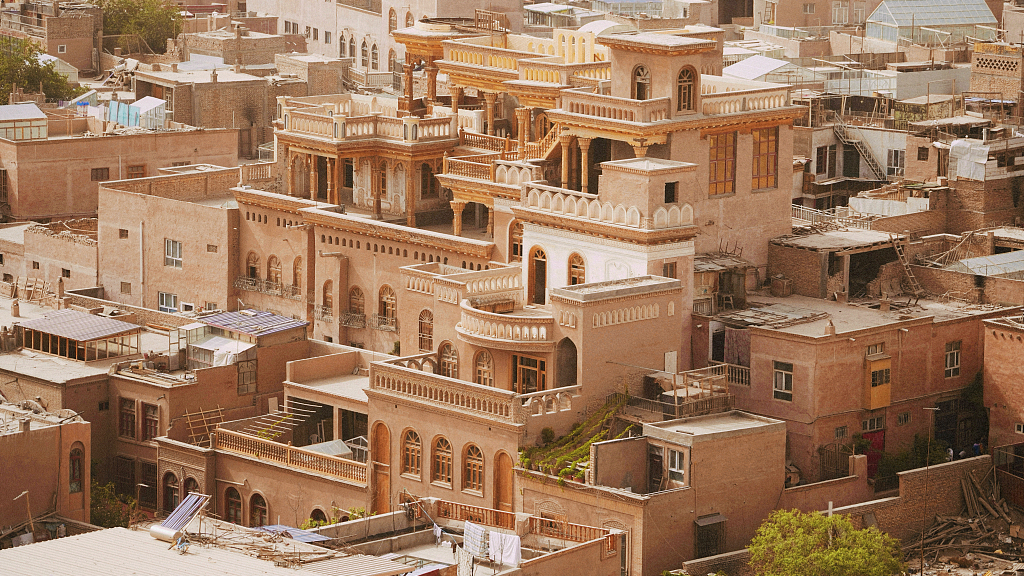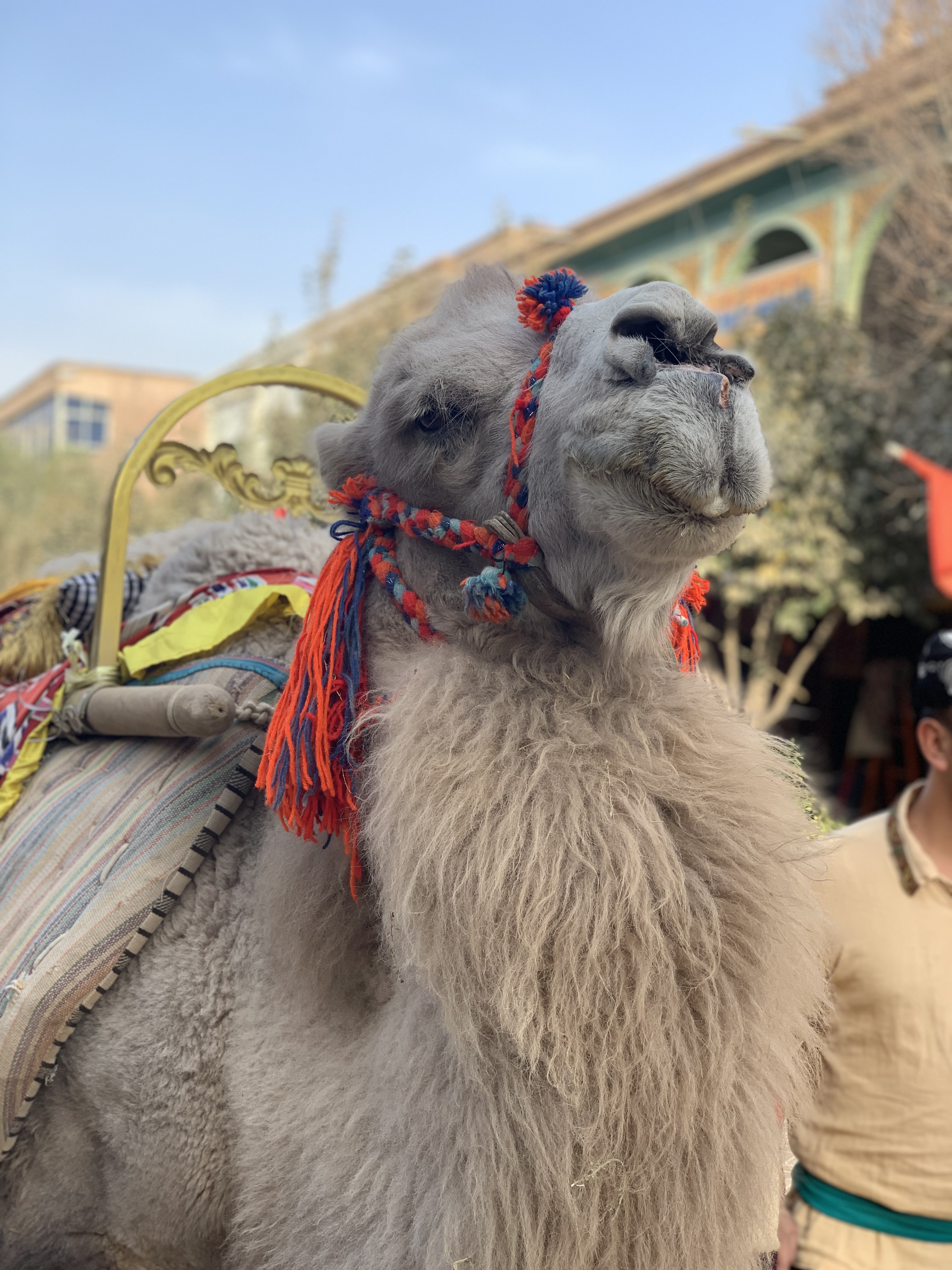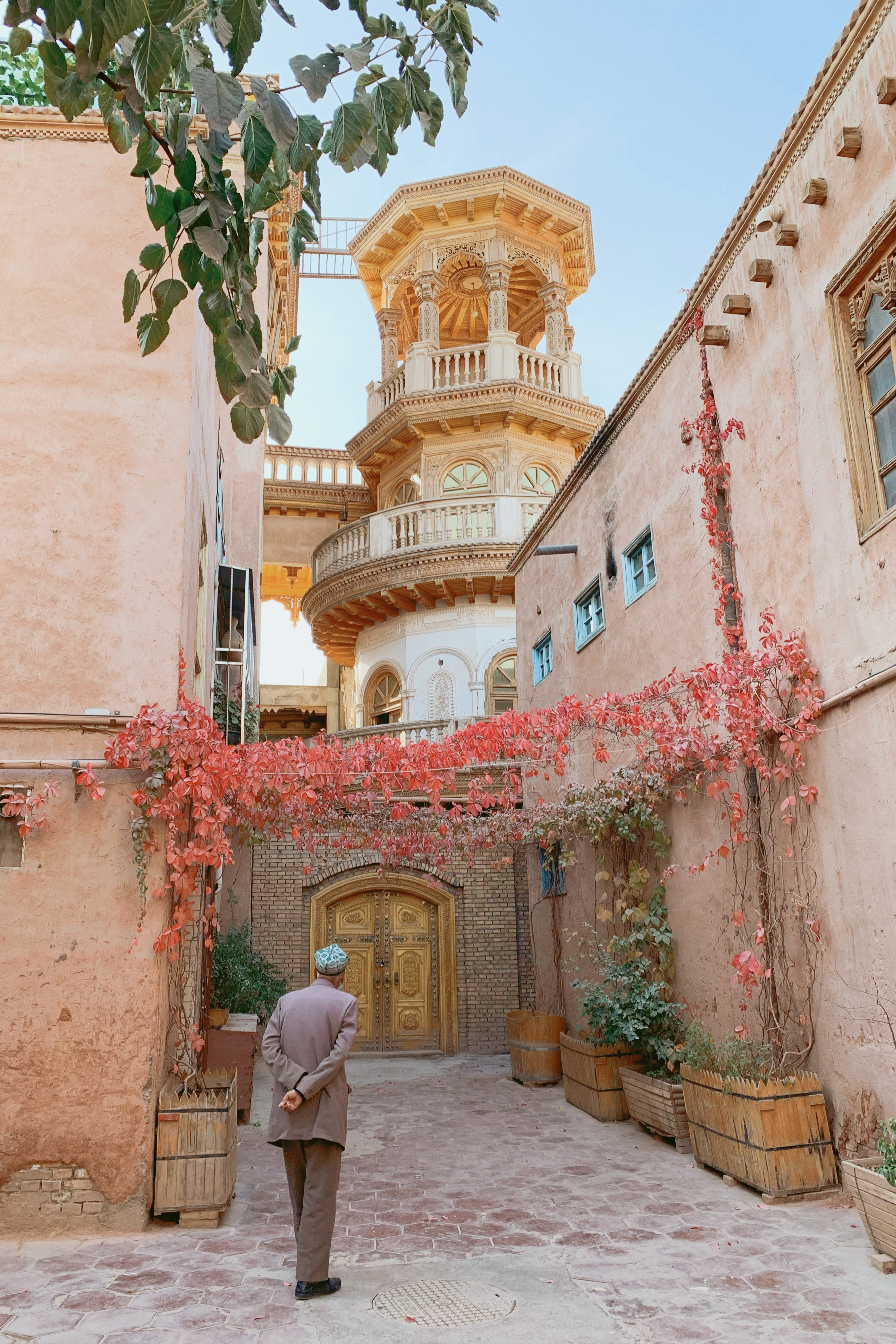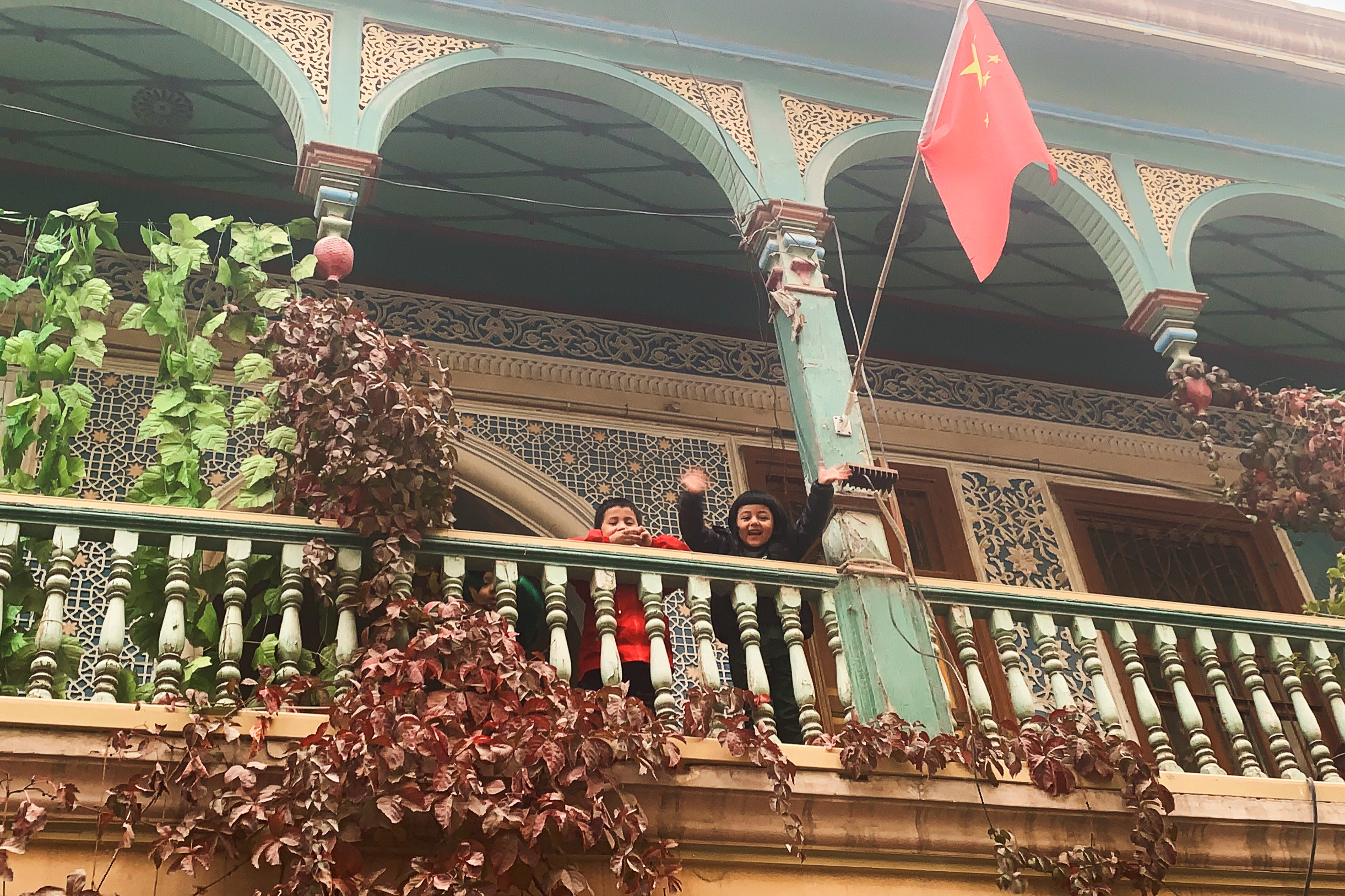
A photo shows the ancient city of Kashgar in Xinjiang. /CFP
A photo shows the ancient city of Kashgar in Xinjiang. /CFP
Kashgar in northwest China's Xinjiang Uygur Autonomous Region borders Tajikistan, Afghanistan, and Pakistan.
More than 2,100 years ago, the legendary royal emissary Zhang Qian of the Han Dynasty (202 BC-220 AD) began his journey with his envoys to the Western regions via Central Asia. This expedition eventually led to the opening of the Silk Road. Historical records noted that Zhang made a stop in Kashgar.

A photo shows a camel in the ancient city of Kashgar, Xinjiang. /CGTN
A photo shows a camel in the ancient city of Kashgar, Xinjiang. /CGTN
Another legendary figure and diplomat of the Han Dynasty, Ban Chao, arrived in Kashgar during Han's turbulent times.
Obstacles on the Silk Road were cleared, and the smooth flow of the Silk Road attracted merchants to gather in Kashgar, promoting the exchange of Eastern and Western civilizations.
At the beginning of Yuan Dynasty (1271-1368), Italian merchant and adventurer Marco Polo left from Venice and embarked on a journey along the Silk Road. After passing through Syria and Iran, and then crossing the Pamir Plateau, he arrived in Kashgar. In Marco Polo's accounts, Kashgar was described as an international commercial metropolis.

A photo shows a local man walking in the ancient city of Kashgar, Xinjiang. /CGTN
A photo shows a local man walking in the ancient city of Kashgar, Xinjiang. /CGTN
In the Qing Dynasty (1644-1911), the Silk Road underwent further expansion. At that time, the old city of Kashgar was very small and was crowded with houses. The Qing officials stationed in Kashgar petitioned the court and a new city was constructed one kilometer away from the old city. Kashgar thus received more development.

A photo shows two children on a balcony in Kashgar, Xinjiang. /CGTN
A photo shows two children on a balcony in Kashgar, Xinjiang. /CGTN
As a "living ancient city," the legends of Kashgar don't end there. In 1986, Kashgar was designated as a national-level historical and cultural city by China's State Council.
Today, with the shrinking distances brought by air and rail transportation, the culture and economy of this important Silk Road city continue to develop. The vibrant market described by Marco Polo has transformed into a variety of bazaars. The horse-hoof prints in Kashgar and its tea houses that once served traveling merchants continue to be reminders of the city's trade heritage. The Silk Road has endowed this city with blood and flesh, wisdom, and wealth. As long as the stories of the Silk Road continue, the ancient city will remain young.





